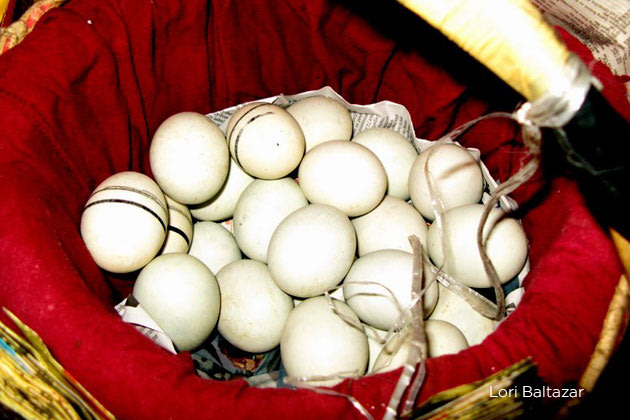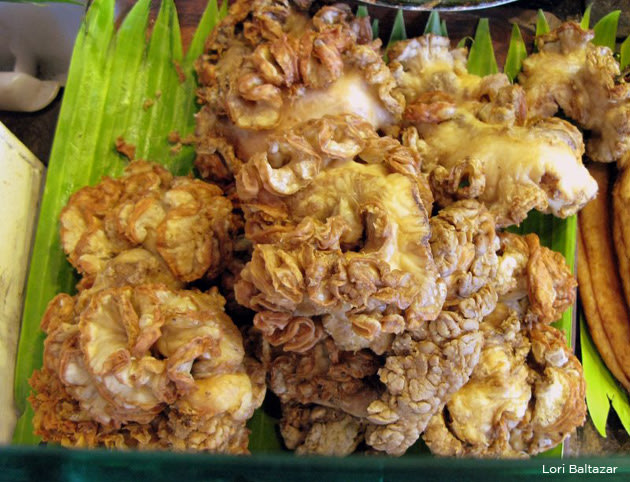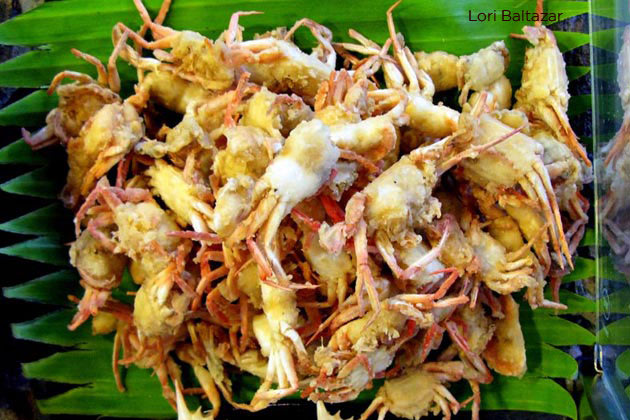Inuman Food
Whether you're swigging down a bottle of beer, shooting down shots of lambanog (local wine made from coconut), or taking your time with a bottle of wine, there's nothing like pairing pulutan with a drink. Incorrectly but steadfastly believed to "line the stomach," thus allowing for less alcohol absorption (read: beer belly) pulutan takes a myriad of forms--from glorified street food using the different anatomies of chicken and pigs to more upscale versions rebranded as tapas.
Pulutan is not a meal or a snack even. It's food that always has alcohol at its center, is often grilled or deep-fried, is always oily, and should be able to be eaten with your fingers, most of the time anyway. Here, a few of the popular pulutans:
Sisig
Practically everything except the pig's oink and meat are used to make this Kapampangan original. Skin, cheeks, nose, ears, even the animal's inner organs are chopped up, boiled, seasoned, and grilled. Sometimes it's even fried with plenty of chopped onions and chilies and salt. When it comes to table, people reflexively reach for the liquid seasoning and tak-tak-tak! it on followed by squeezes of calamansi. And because nothing spells sisig like excess, a whole raw egg is cracked atop. There's even sisig mixed with chunks of chicharon to make crunchy sisig, a heart-stopping (literally!) version of the original sisig which is soft and salty.
Chicharon Bulaklak
Filipinos love crispy pork in all its forms: lechon, crispy pata, lechon kawali, chicharon. But the ultimate crispy pig is chicharon bulaklak. It's fried pork intestines that when deep-fried bloom, hence the "bulaklak" assignation. And truly, they do look like flowers, curly edges that ripple around a middle of fat and a chewiness that alternates between tough and tender. There's a feral, very deeply meaty flavor about a good chicharon bulaklak and it's at its best when dipped in a vinegar-soy sauce concoction or eaten as is sprinkled with grains of salt or even MSG.
Crispy Crablets
Admittedly less common than the above, these are wonderful because you can eat the whole thing, head and all. These soft-shelled baby crabs abound in riverbanks but can be cultured in fish ponds too. After cleaning and being soaked in gin to remove any off-odors, they're dredged in seasoned flour and then flash-fried. It's best to eat these when hot off the fryer and dipped — make that dunked — in strong vinegar anointed with siling labuyo (bird's eye chili) and salt.

A favorite in reality shows and is often used jokingly to instill "fear" in foreigners visiting Manila …
Balut & Penoy
Sold at night by itinerant vendors shouting the characteristic "Baluuut . . . penoy!" this is the first choice of people who've pulled together a spontaneous drinking session outside their home. Usually sold together and swathed in a grimy, threadbare cloth to keep the eggs warm, the eggs are differentiated only by scrawled markings with a fast-fading marker pen.
Balut and penoy are both duck eggs but it's their incubation length that determines their look and thus, taste. The more benign is the penoy, an infertile duck egg which, while it sounds technical, looks and tastes like a regular boiled egg. It's usually sold with grains of coarse salt pressed into a fold of newspaper. Use this instant receptacle to hold the pieces of peeled eggshell and then press the salt onto the penoy.
The balut is a favorite in reality shows and is often used jokingly to instill "fear" in foreigners visiting Manila. An incubated duck egg with a 16-18 day-old embryo, this is made edible after being boiled for up to 30 minutes. A balut can be off-putting right from the get-go with its webbed shell interior and indescribable texture — from the chick itself to the lone bone.
Grossness aside, both these eggs are favorites among beer drinkers. And that they're regarded as aphrodisiacs and energy boosters is but a plus.
BBQ
Filipinos have their own inimitable way with grilling meats on sticks. Whether it's whole meat parts like pork bbq or animal innards (isaw and tenga and betamax et al.), this is food that's marinated, skewered, and cooked. Cheap and satisfying with a variety to please the pickiest, plus it can be eaten out of hand, what could be better than that?
Lori Baltazar is the whiz behind the popular food blog, Dessert Comes First. Looking for more tasty Timpla articles by Lori? Find them here. You can also follow Lori on Twitter.







0 Comments:
Post a Comment
Subscribe to Post Comments [Atom]
<< Home